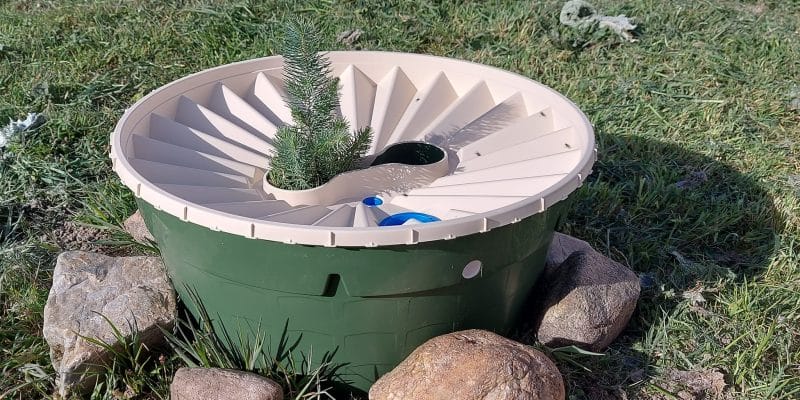The National Agency for the Great Green Wall (NAGGW) has just signed an agreement with the Dutch company Groasis waterboxx for the supply of its "waterboxx" solution in the framework of the Great Green Wall initiative in Africa. This is an advanced irrigation technology that will allow the rationalisation of water use, among other things.
Rationalising the use of irrigation water to plant more trees in Africa. This is the ambition of the National Agency for the Great Green Wall (NAGGW), which has just signed a partnership agreement with Groasis waterboxx, the Dutch supplier of irrigation water rationalisation technologies. According to the agreement signed on 14 April 2023 in the Netherlands, Groasis waterboxx will provide its “Waterboxx” solution as part of the Great Green Wall (GGW) initiative in Africa. The initiative launched by the African Union (AU) in 2007 aims to restore 100 million hectares of degraded land on the continent by 2030 through a large vegetation barrier over 8,000 kilometres south of the Sahara.
The Groasis waterboxx technology will initially be deployed in Nigeria, which has been managing the funds allocated to the GMV project since 2021. In the West African country, the advanced irrigation solution “waterboxx” will be officially produced and licensed by Boplas Industries, according to an agreement concluded on 14 April 2023 with Groasis waterboxx.
How does the waterboxx work?
Waterboxx technology is known for its exceptional triple 90 benefits. “It is 90% cheaper to use per hectare than drip irrigation, and saves 90% of the water used by drip irrigation. In addition, the trees in the Groasis cocoon have a 90% survival rate,” explains Wout Hoff, CEO of Groasis waterboxx.
To achieve these results, a young tree is placed in the centre of the bucket-sized ‘waterboxx’, which is then filled with about ten litres of water. A lid is then placed over the whole, leaving only the plant on one side and the roots on the other.
Read Also – AFRICA: Water management, a key issue for biodiversity
This solution, which can be reused on 10 to 40 trees, provides the shrub with the water it needs for its roots to reach a depth of three metres for one year. In addition to the initial supply of liquid at the time of installation, the solution collects rainwater or captures water by condensation, while preventing the resource present in the subsoil from evaporating. In Nigeria, the “Waterboxx” will also stabilise the temperature around the roots of plants, combat competing weeds and even prevent damage from rodents.
Focus on sustainability
The ‘Waterboxx’ solution will then be deployed in The Gambia, Senegal, Mauritania, Mali, Niger, Chad, Sudan, Ethiopia, Eritrea and Djibouti; ten countries through which the long, 15 km wide vegetation corridor planned as part of the GMV initiative will also pass. This vegetation strip will run from Dakar to Djibouti and will cover more than 117,000 km2 or 11.7 million hectares.
In addition to combating desertification, the Great Green Wall initiative aims to capture and store 250 million tonnes of CO2 through vegetation by 2030, create 10 million jobs in rural areas while contributing to food security in Africa, one of the continents most affected by malnutrition in the world. According to a United Nations (UN) study published in 2020, the Great Green Wall had only achieved about 20% of its objectives, particularly in Senegal and Ethiopia.
Inès Magoum







